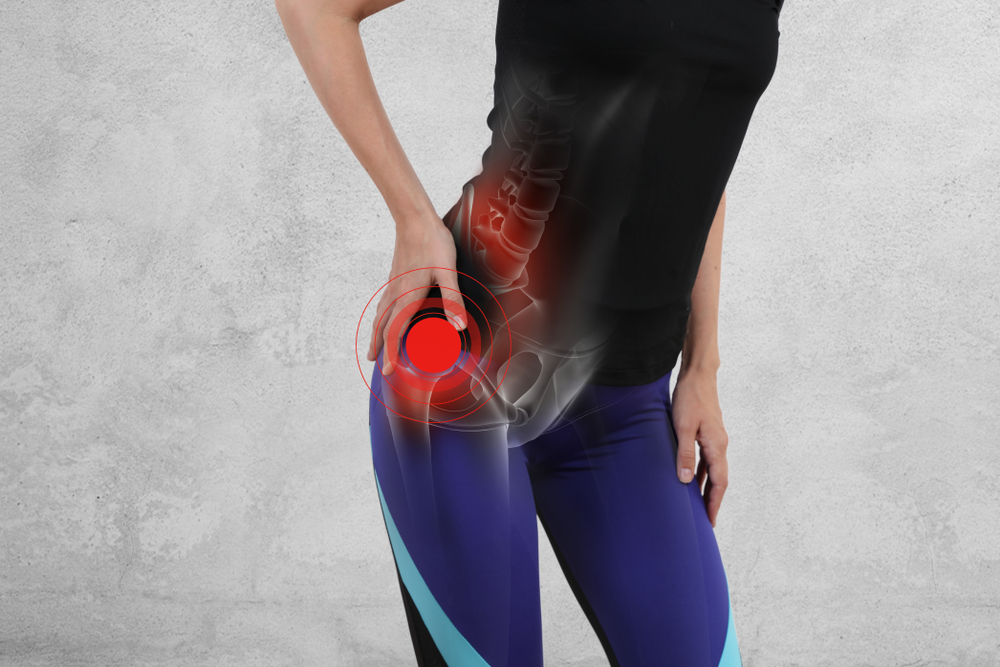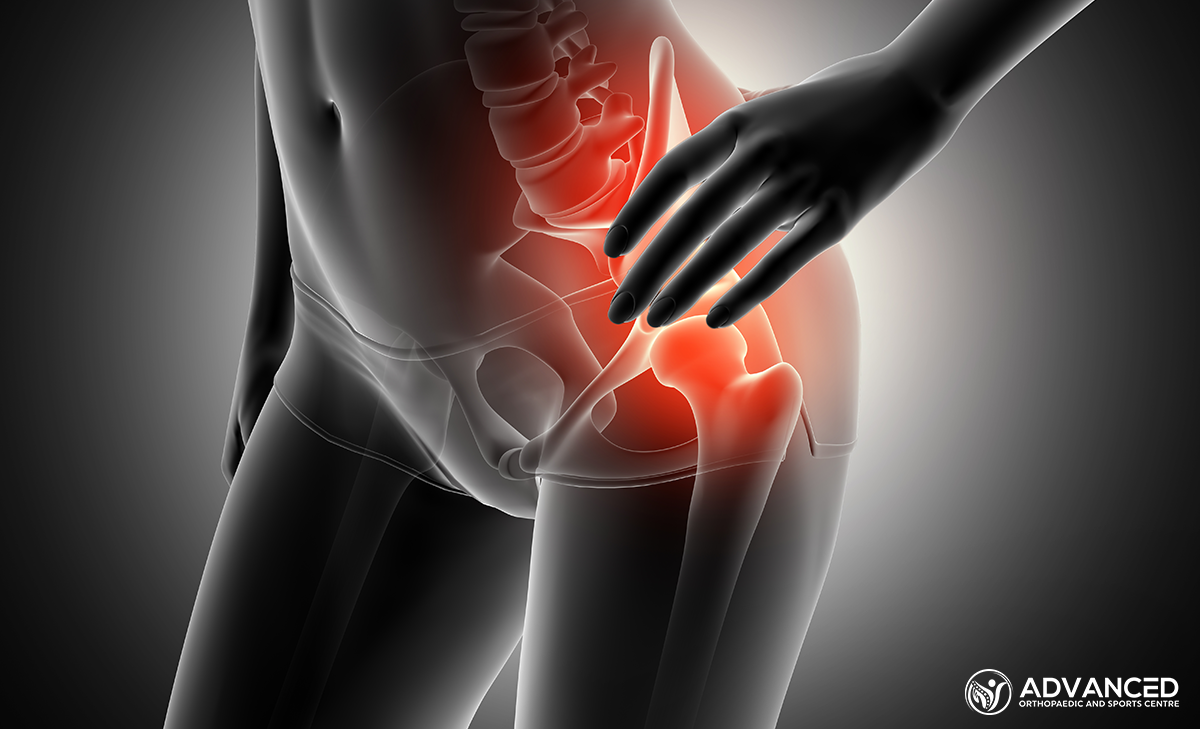What is Femoroacetabular Impingement?
Femoroacetabular impingement (FAI) is characterised by abnormal contact between the femoral head and the acetabulum. This irregular contact can cause damage to the joint, leading to pain and limited movement.
FAI is typically categorised into three types based on the area of impingement and is a common cause of hip pain in young and active people. Early diagnosis and treatment can contribute to the prevention of further joint damage.
Types of Femoroacetabular Impingement
Femoroacetabular impingement can manifest in different forms, depending on the area of the hip joint affected. The condition is categorised into cam, pincer, and combined types. Each type has distinct characteristics and mechanisms of impingement, contributing differently to the development of symptoms.
Cam Impingement
In cam impingement, the femoral head is not perfectly round. This mismatch in shape can cause friction during hip movements, leading to joint damage.
Pincer Impingement
Pincer impingement occurs when the acetabulum covers too much of the femoral head. This over-coverage leads to the femoral head impacting against the rim of the acetabulum.
Combined Impingement
Combined impingement features elements of both cam and pincer impingement. It involves both abnormal femoral head shape and excessive coverage by the acetabulum.
Causes and Risk Factors
Understanding the causes and identifying risk factors for femoroacetabular impingement can contribute to prevention and early intervention. Typical factors can include:
- Developmental Factors: Some people are born with hip joint shapes, making them more susceptible to FAI.
- Activities and Lifestyle: High-impact sports and activities that involve repetitive hip movements can increase the risk of developing FAI. Athletes in sports such as soccer, hockey, and ballet are at a higher risk.
- Age and Gender: FAI is more commonly diagnosed in young and middle-aged adults. There is also a slightly higher prevalence in men compared to women, particularly for cam impingement.
- Previous Hip Injuries: People who have suffered from hip injuries in the past may have an increased risk of FAI.
Symptoms and Diagnosis
Identifying and understanding symptoms and accurate diagnosis can help manage femoroacetabular impingement (FAI). This process ensures that appropriate treatment strategies are employed promptly.
Symptoms
- Pain in the Groin Area: The most common symptom, often worsened by walking, running, or bending activities.
- Stiffness: A reduced range of motion in the hip joint, making certain movements difficult.
- Limping: As the condition progresses, affected people may develop a limp due to discomfort or stiffness in the hip.
Diagnosis
- Physical Examination: An assessment of the range of motion and pain in the hip joint will be done.
- Imaging Tests: X-rays can reveal abnormalities in the shape of the hip joint, while MRI scans can help detect labral tears associated with FAI.
- Diagnostic Injection: An injection of a numbing agent into the hip joint can help determine if pain is indeed coming from the hip.
Treatment Options
Effective management of femoroacetabular impingement (FAI) involves a combination of non-surgical and surgical treatment options. Treatment choice is guided by the severity of symptoms and the extent of hip joint damage.
Non-surgical Treatments
- Physical Therapy: Tailored exercises can improve hip joint flexibility, strengthen the surrounding muscles, and reduce symptoms.
- Medications: Nonsteroidal anti-inflammatory drugs (NSAIDs) can help relieve pain and reduce inflammation.
- Activity Modification: Avoiding activities that worsen symptoms can be beneficial in managing FAI.
Surgical Treatments
- Arthroscopy: A minimally invasive surgery that involves making small incisions to repair or remove damaged tissue.
- Osteoplasty: Involves reshaping the femoral head or acetabulum to alleviate impingement.
- Labral Repair: Repairing or reattaching the damaged labrum to improve hip stability and function.
Recovery and Rehabilitation
Recovery following treatment for femoroacetabular impingement (FAI) focuses on gradually restoring hip function, strength, and flexibility. The duration and complexity of the recovery process vary depending on the treatment approach, with surgical treatments generally requiring a more structured rehabilitation plan.
Post-surgical Recovery
- Initial Rest and Pain Management: The first few weeks post-surgery involve rest and managing pain through medications.
- Physical Therapy: Begins with gentle exercises to increase range of motion, progressing to strength training over time.
- Gradual Return to Activities: Patients are advised to slowly reintegrate into their daily activities and sports, guided by their tolerance and under supervision.
Rehabilitation for Non-surgical Treatment
- Ongoing Physical Therapy: Includes exercises to improve hip mechanics and strengthen the hip joint, tailored to the person’s needs.
- Activity Modification: Continuously adjusting activities to avoid movements that trigger symptoms, focusing on long-term joint health.
Prevention and Management Tips
While it’s not always possible to prevent femoroacetabular impingement (FAI), certain strategies can reduce the risk of developing symptoms and manage the condition effectively. These tips can include:
Maintain a Healthy Weight
Excess body weight can increase the stress on hip joints, worsening symptoms.
Regular Exercise
Engaging in regular, low-impact exercise helps maintain hip flexibility and strength. Focus on activities that do not strain the hip joint.
Proper Technique in Sports
Athletes should ensure they use proper technique, especially in sports requiring extensive hip movements, to minimise the risk of joint damage.
Ergonomic Workplace Adjustments
Ensuring the work environment supports optimal hip positioning for those with sedentary jobs can help prevent stiffness and discomfort.
Hip Protection Measures
Utilise protective gear during activities that may pose a risk to the hip area to prevent injuries that could lead to FAI.
Conclusion
Femoroacetabular impingement (FAI) is a condition that requires timely diagnosis and appropriate treatment to prevent further joint damage and maintain hip function. Adopting preventive measures and adhering to a personalised rehabilitation plan allows people to manage symptoms effectively and lead active, healthy lives.




